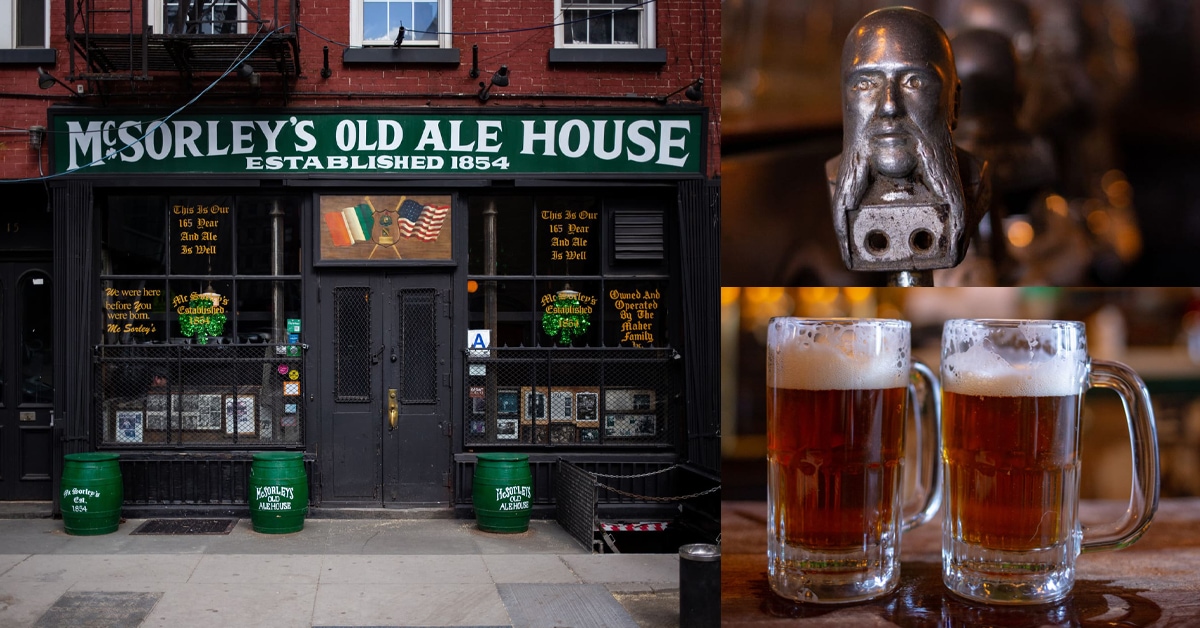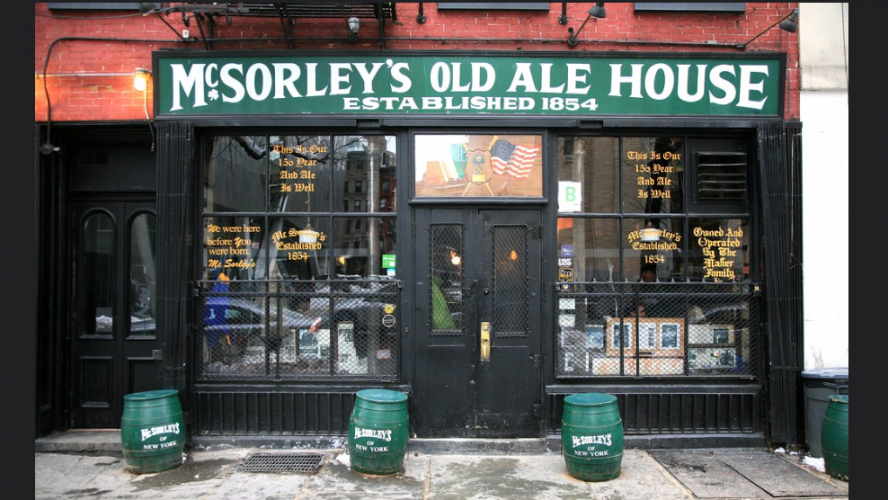Table Of Content

I still didn’t want one to fall in my beer, but now it wasn’t just for sanitary reasons. You will notice no stools, standing room only (three deep at times) — the original taps, no longer in use. The old ice chest, houses sodas, the only drink other than ale permissible. You’ll find no cash register at McSorley’s — there’s never been one and probably never will. A sign above states “We Trust Here” and shows a pig’s behind!
Menu
The glint of the well-worn taps behind the bar, which all feature Old John McSorley’s head, helps distract the casual observer from discovering the pub’s final secret. Nestled amongst a formidable collection of bric-a-brac lie three small vessels. Each contains the earthly remains of a McSorley’s regular whose final wish was to be laid to rest amongst the sawdust and tchotchkes. Houdini good-spiritedly agreed to the challenge and let the police officer shackle him. Triumphantly, Houdini clanged the handcuffs down on the rail below the bar—locking them into place forever.
A brief history of McSorley’s – New York’s oldest Irish bar
As the name suggests, the only libation served on the premises is ale. This story was originally published in March 2023, and most recently updated on March 17, 2024. There was also a large outdoor dining area set up on the street outside, so finding a place to sit on busy days like St. Patrick's Day shouldn't be completely out of the question.

“Good Ale, Raw Onions and No Ladies” – a former pub motto
It’s also easy to imagine who hasn’t visited McSorley’s over the years. It wasn’t until 1970 that women were finally allowed inside. The pub, whose motto was “Good Ale, Raw Onions, and No Ladies,” was not yet ready to get with the times. In fact, they fought hard to keep women out of the establishment and even considered becoming a private club to do so. But on a Tuesday afternoon, it’s easy enough to grab a couple of beers, settle into a worn wooden table, and imagine the people who have passed through its double doors in need of “a cold beer to warm up”—a phrase Buggy uses frequently.
Hungry City: McSorley’s Old Ale House in the East Village - The New York Times
Hungry City: McSorley’s Old Ale House in the East Village.
Posted: Thu, 02 Jan 2014 08:00:00 GMT [source]
History
John and his family moved into a unit upstairs and then eventually purchased the building in 1888. Before going to McSorley's myself, I half-expected to find a rowdy group of drunk people dressed up for St. Patrick's Day and drinking overpriced beer. What I experienced couldn't have been more different than my expectations.
McSorley’s Old Ale House
Despite how busy the bar was, I was pleasantly surprised by the friendly and fast service I received from the bar staff and bouncer. If you're looking for an immersive experience, you can't feel much closer to Ireland anywhere other than McSorley's. Almost every inch of the walls was adorned with old photos, newspaper clippings, pictures of Irish American presidents, and festive St. Patrick's Day decorations.
A Tour of McSorley’s

And, of course, where their sons stuck wishbones up on a gas lamp before going off to war and wished that they would come back to snap them. The legendary backroom (where the ale flowed during prohibition), is adorned with the infamous, and very risque (for its time), portrait of a nude with her parrot. The old fireplace is also in the backroom-that’s where the original owner-John McSorley held court (as witnessed in a well-known John Sloan sketch nearby).
“Not a day goes by without someone coming in and starting a conversation with, ‘The last time I was in here…’” Buggy says. When he died in 1883, his chair was retired and still sits behind the bar. That is, until the city’s health department came knocking in 2011 and demanded the bones be dusted. (His daughter, Teresa Maher de la Haba is the current owner.) He felt that he could not entrust the task to anybody else.
Because of this exclusivity, patrons have been known to surreptitiously sprinkle a loved one’s ashes on the floor. A thin layer of sawdust—a relic from another era when patrons would track in mud and horse manure—makes it plausible that a bit of grandpa’s ashes could be added on the sly. It stated that the subjected establishments had to provide “sanitary facilities” for their employees … but not necessarily for their customers. It would take another 16 years before McSorley’s would finally install a women’s restroom.
There’s even a plaque from the CIA, dedicated “to the Staff of McSorley’s” in 2006 for their “Outstanding Support.” McSorley’s has always had a room dedicated to these young men, and now young women. McSorley’s in 1980 was famous, of course—it was New York’s oldest bar, and had been celebrated for almost a hundred years—and during the evenings and on weekends it drew a crowd of bohemian types, visiting firemen, and such. But the weekdays, when I liked to come in, still belonged to the locals. This was long before the East Village, where the bar is, got gentrified and rents got driven up to the point that you needed a finance job or a trust fund to live there.
From every wall, to each nook-and-cranny — history pours as freely as ale from the taps. Unlike the drinks, which are slammed on the bar seconds after ordering, change arrives slowly at McSorley’s. In 1994, Teresa Maher de la Haba, daughter of current owner Matthew Maher, became the first woman to tend the battered wooden bar. The décor hasn’t changed much in the past 165 years—pieces are rarely added or removed and everything is perpetually dusty. McSorley’s has all the hallmarks of a classic tourist attraction, but Buggy says it’s the regulars who really make the place special. Eleven years in, Buggy still refers to himself as “the new guy.” One bartender has been working at McSorley’s for 47 years (and counting), and several customers have been coming in on a regular basis since the 1950s.
During World War I, Old John’s son, Bill, began a touching tradition. McSorley’s gifted a free turkey dinner and beer to all the neighborhood men who were leaving for the trenches. After the meal, the soldiers would place their wishbones on the lamp rail over the bar for good luck fighting in France. Thomas Moran said he was going to go to McSorley’s “and have a mixed ale.” I think I’ll join him. In fact, strictly considered the wishbones have nothing to do with the boys from the neighborhood offering themselves to death. I don’t know when the story started, but already in 1956 the United Press was identifying them as being from “an 1865 victory dinner,” so it’s easy to se how it might snowball from there.
No comments:
Post a Comment